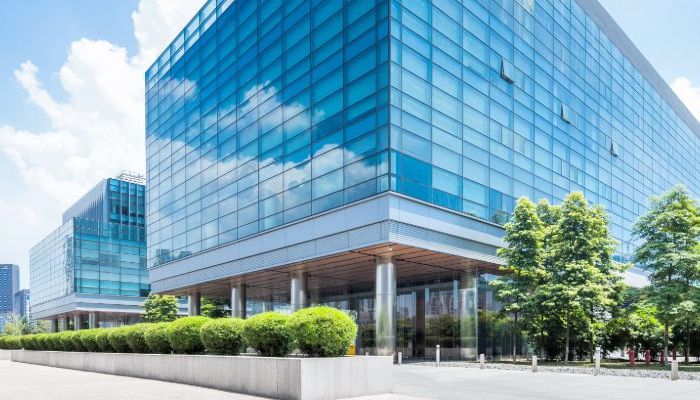Each year, FM:Systems conducts a survey of U.S. business leaders in HR, finance, facilities and real estate to take their temperature on issues impacting the workplace and how they’re balancing the preferences of employees against the needs of the business. This year, we asked 750 of these business leaders about topics like hybrid working, sustainability, the role of the office and adoption of workplace management technology. For the first time ever, we also surveyed 1,000 U.S.-based employees to get a holistic view of the push-and-pull between organizations and their workers on these issues.
What the FM:Systems 2025 Inside the Workplace survey revealed is that companies and employees are feeling more settled after five years of volatility and uncertainty.
- More than 80% of business leader respondents said they’ve achieved or are close to achieving a “new normal” that balances the needs of the organization and its employees.
- Meanwhile, 74% of respondents to the employee survey reported feeling secure with their current organization.
Against this backdrop of stabilizing conditions, our survey paints the clearest picture we’ve had in years of what the workplace will look like for the foreseeable future. Here’s a glimpse at some of those findings:
Workplace Management Technology is Here to Stay: Boosting Operational Efficiency and Cost Savings
Over the past five years, organizations have embraced workplace management solutions to help them deal with wave after wave of challenges, from ensuring the safety of returning employees to cutting costs in the face of high inflation. Our survey found that, in just the past year, the share of organizations using a workplace management solution has increased by 23%. The majority of these businesses have deployed workplace management technology to help improve operational efficiency.
The volatility that drove much of the adoption of this technology is subsiding. Inflation has fallen from a peak of 9.1% in June 2022 to 2.7% in November 2024, while the Federal Funds Rate — which the Federal Reserve raised to squelch inflation — is down from last year’s highs. Now that organizations are no longer in crisis mode, will the rate of adoption of workplace management technology remain high? Our survey found that the answer is a resounding “yes,” with more than 8 out of 10 business leader respondents saying they plan to implement a workplace management solution in the next year. Workplace analytics, space management and visitor management systems were the most popular solutions being considered in these plans.
Laying the Groundwork for Advanced Technologies: Preparing for GenAI, ML, and Automation in the Workplace
Adoption of workplace management technology remains high because the organizations that have been using it are expanding their deployments and capabilities, while the ones that haven’t are realizing they need to catch up or risk being left behind. Why? Because this technology is on the cusp of a leap forward that will make it an even greater competitive differentiator. Advanced innovations like generative artificial intelligence (GenAI), machine learning (ML), automation and robotics will greatly enhance the capabilities and effectiveness of workplace management solutions.
Our survey found that most organizations need no convincing when it comes to the advantages these tools will deliver:
Over 3/4 of companies are planning to deploy GenAI to assist with the operations and maintenance of workplaces over the next year.
Nearly half of respondents said they plan to implement automation, technology that enables the optimization of workplaces and portfolios in real-time, without the need for human intervention.
Almost 4 in 10 organizations expect to adopt ML, which allows computerized systems to leverage large data sets to learn and get better at their appointed task, without the need for programming.
All-In on Sustainability: Prioritizing Eco-Friendly Practices and Regulatory Compliance for Modern Workplaces
Workplace management technology brings direct benefits to the business, like reducing costs and waste and increasing efficiency. But those benefits also have indirect impacts, most notably in accelerating progress toward sustainability goals. The built environment is the leading contributor to greenhouse gas emissions, which means it also holds incredible potential to lead the charge against human-caused climate change. Real estate stakeholders have made meaningful strides over the years to mitigate the environmental impact of buildings, but those efforts are increasingly being driven by legislation. The penalties and potential negative publicity associated with failing to comply with these laws is strengthening the business case for prioritizing sustainability.
- Two-thirds of business leader respondents to our survey said sustainability is a higher priority than it was a year ago.
- Meanwhile, 75% of respondents to our employee survey believe it’s important for their organization to commit to sustainability, and 63% feel their organization is doing well in this area.
Among the organizations that said sustainability was a higher priority, the biggest reasons given for that elevated importance were brand enhancement and compliance with regulations.
- 6 in 10 businesses have established sustainability goals, and 90% of those companies are on track to achieve those goals.
To explore other findings of the report, including how business leaders and employees view the role of the office, read it here: FM:Systems 2025 Inside the Workplace report.
Don’t forget to also check out the recent webinar, Inside the Workplace 2025: Data-Driven Strategies for Success.










